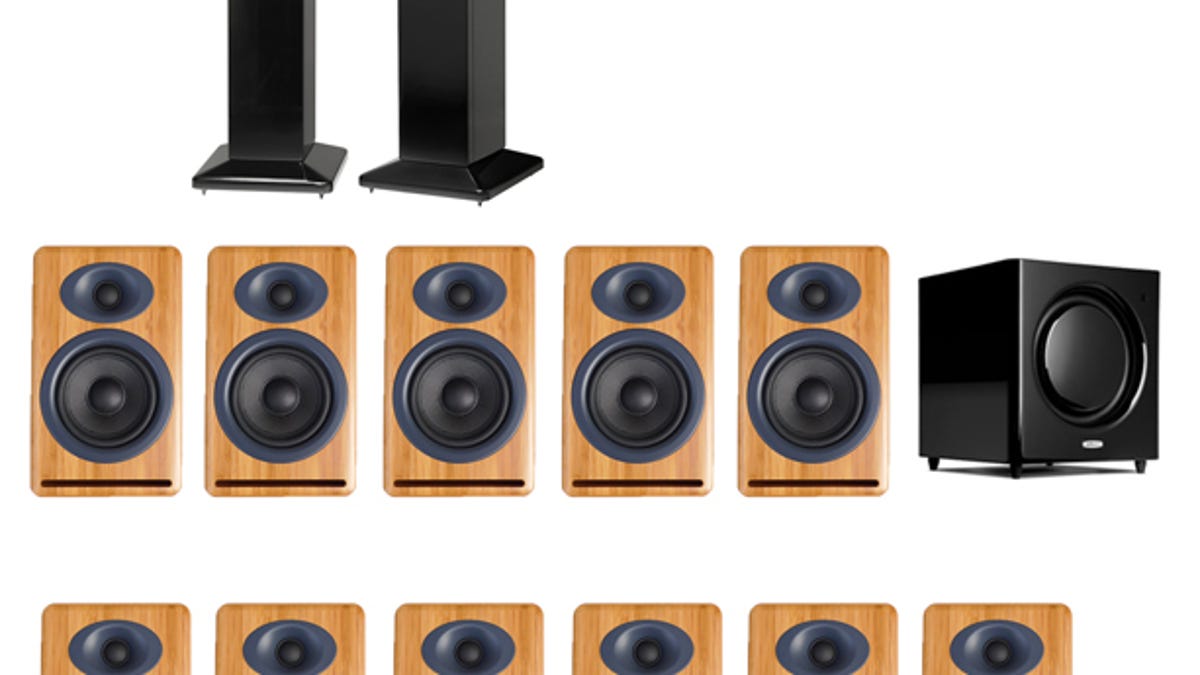How many speakers does a home theater need?
Stereo home theaters can sound awesome, some go all the way and use eleven speakers, but the single speaker sound bar is fast becoming the most popular option.

Up until recently the classic, five-speaker home theater setup, with three front speakers -- left, center, and right, plus two surround speakers, and a subwoofer -- was the de facto home theater standard. According to Dolby, surround speakers should be placed to the sides and slightly behind your couch or main listening position. If you want to step up to 7.1 channel home theater the two extra surround speakers go behind the listening position, which is next to impossible if your couch is up against, or near a wall. If your room is large, and the couch is out in the open, go 7.1, or if it's really big, consider adding extra subs.
Then Dolby upped the ante and introduced Pro Logic IIz processing that added stereo "height" front speakers placed a few feet above the front main left and right speakers, which bumped the speaker count to nine. Audyssey took a different course and promoted DSX, which adds "Wides," extra speakers positioned wider than the front stereo speakers, again, that's a nine-channel system. DSX can also provide width and height speaker channels, so now we're up to eleven channels. Yamaha's RX-Z11 eleven-channel receiver features proprietary processing to produce room-filling sound.
My experiences with Dolby Pro Logic IIz and DSX processing were a letdown, and while there was a lot of hoopla accompanying the introduction of height and width speaker channels in 2009, the idea fizzled. In fact, the market went the other way, and single speaker sound bars popularity is on the upswing.
I think single-speaker systems performance compromises are significant, which is why I've long proposed stereo home theater. I'm not convinced that a sound bar can fill a room with sound as well as a pair of speakers, spread 72 or more inches apart. Then again, some of the latest 'bars I've tested here at CNET, like the $499 Sharp HT-SB60, demonstrate how far sound bar performance has come. It's really pretty amazing, but then again, measuring an impressive 54.5 inches wide, it's the biggest sound bar I've tested. As always with audio, size does matter.
Unless you have a very large home theater, say over 600-700 square feet, a first class 5.1 channel system will do a great job. If you listen to more music than watch movies, a stereo home theater would be a smart alternative. That's what I use at home, with my Magnepan 3.7speakers, and no subwoofer. Two really decent speakers will trump five or more lesser ones, it's always a bad idea to mistake quantity for quality.
How many speakers do you have in your home theater?
There's still time to write an article for the You can be the Audiophiliac for a day "contest." Later this month I'll turn over the reins of this blog to one lucky reader. It could be you.

